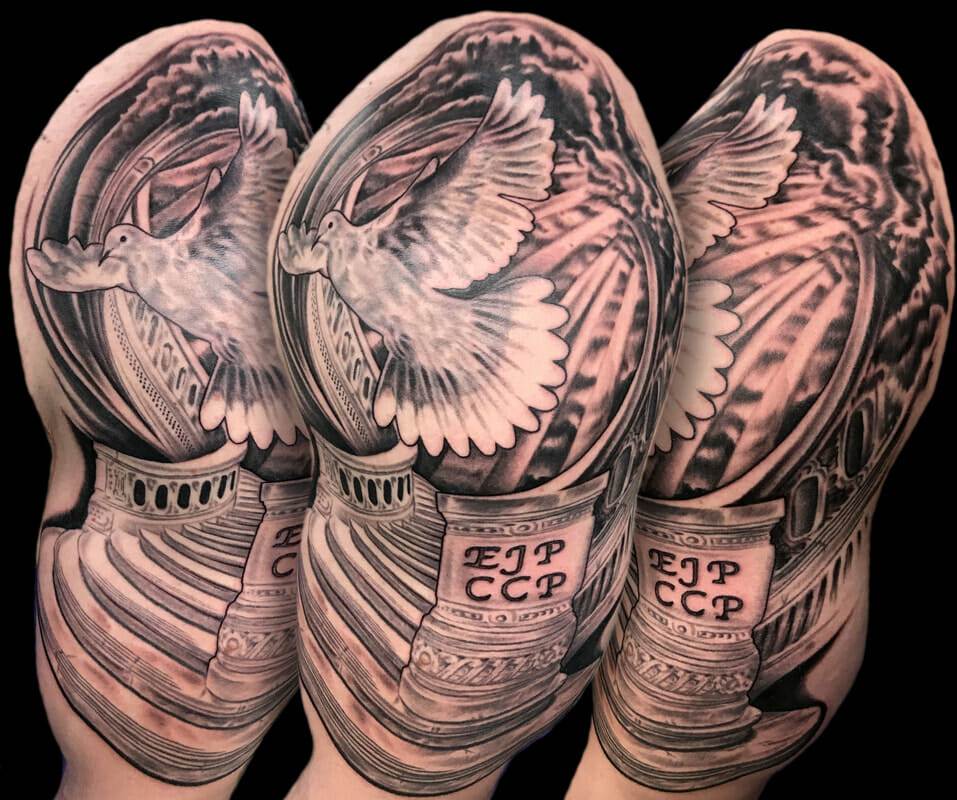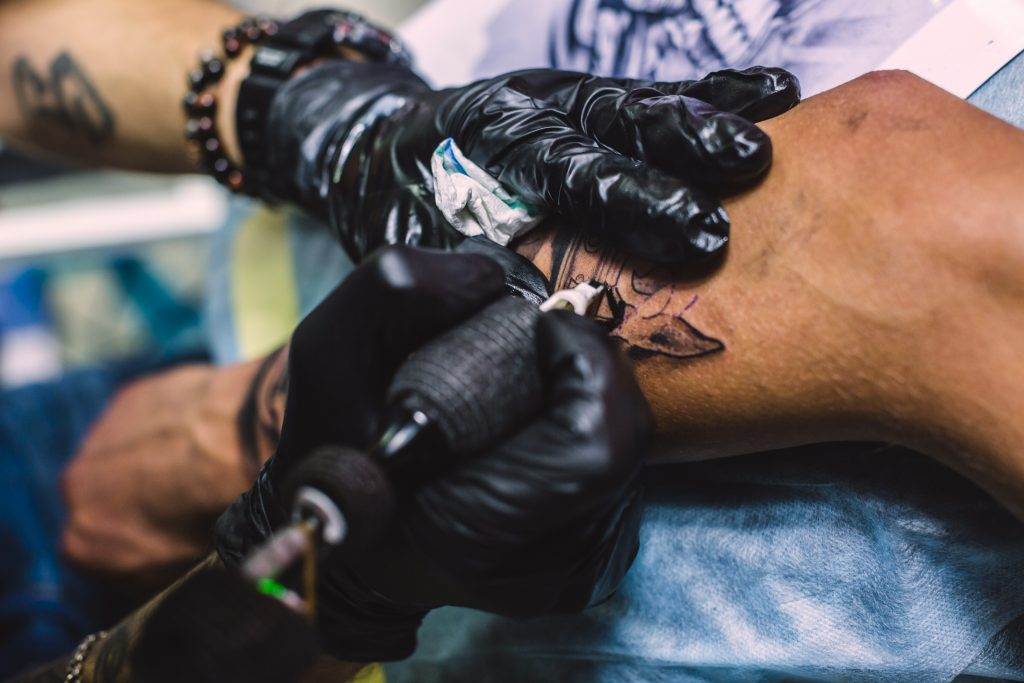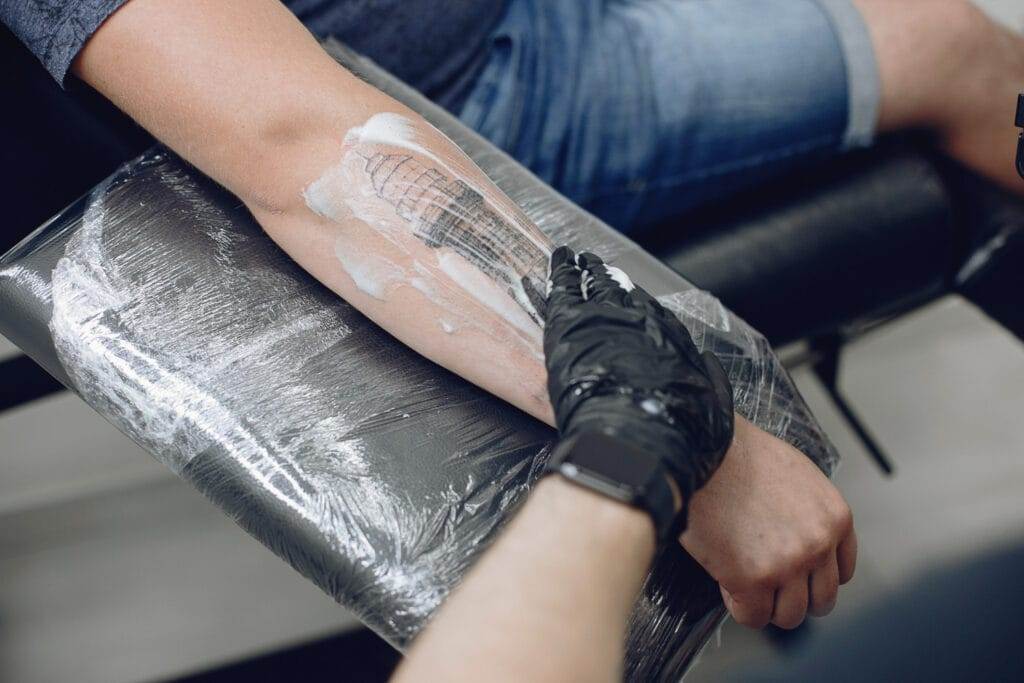Tattoos have become increasingly popular in recent years, with more and more people choosing to get inked as a form of self-expression. However, getting a tattoo is not just about the design and the process itself; it also requires proper care and maintenance to ensure that the tattoo heals well and looks its best for years to come. In this article, we will discuss the importance of proper tattoo care and provide you with a comprehensive guide on how to care for your tattoo.
Preparing for Your Tattoo: What You Need to Know Before You Get Inked
Before you get a tattoo, it is important to do your research and make informed decisions. Start by researching the design and placement of your tattoo. Think about what you want your tattoo to represent and where you want it to be placed on your body. Consider factors such as visibility, pain level, and potential impact on future job prospects.
It is also important to understand the pain and potential risks involved in getting a tattoo. While everyone’s pain tolerance is different, tattoos can be uncomfortable or even painful for some people. Additionally, there are potential risks such as infection, allergic reactions, and scarring. Make sure you are aware of these risks and are prepared to take proper precautions.
Preparing your body for the tattoo process is another important step. Make sure you are well-rested and hydrated before getting a tattoo. Avoid alcohol and drugs, as they can thin your blood and increase bleeding during the tattooing process. It is also recommended to eat a good meal before your appointment to help maintain your energy levels.
Aftercare Basics: How to Care for Your Tattoo in the First Few Days
After getting a tattoo, it is crucial to follow the aftercare instructions provided by your tattoo artist. These instructions may vary slightly depending on the artist and the size and location of your tattoo, but there are some general guidelines that apply to most tattoos.
One of the most important aspects of aftercare is keeping the tattoo clean and dry. Gently wash the tattoo with a mild, fragrance-free soap and warm water. Avoid scrubbing or rubbing the tattoo, as this can cause irritation or damage to the healing skin. After washing, pat the tattoo dry with a clean towel or let it air dry.
It is also important to avoid certain activities and substances that can harm the tattoo. Avoid swimming or soaking in water for extended periods of time, as this can cause the tattoo to become waterlogged and increase the risk of infection. Avoid exposing the tattoo to direct sunlight, as UV rays can fade the colors and cause damage to the skin. Additionally, avoid applying any creams, lotions, or ointments that are not specifically recommended by your tattoo artist.
Cleaning Your Tattoo: Step-by-Step Instructions for Proper Hygiene
Proper cleaning is essential for the healing process of your tattoo. Here is a step-by-step guide on how to clean your tattoo:
1. Wash your hands thoroughly with soap and warm water before touching your tattoo.
2. Gently remove any bandages or wraps that were applied by your tattoo artist.
3. Wet the tattoo with warm water and apply a small amount of mild, fragrance-free soap.
4. Gently lather the soap over the tattoo, using your fingertips or a clean, soft cloth.
5. Rinse the tattoo with warm water, making sure to remove all traces of soap.
6. Pat the tattoo dry with a clean towel or let it air dry. Do not rub or scrub the tattoo.
7. Once the tattoo is dry, apply a thin layer of recommended aftercare ointment or lotion, as instructed by your tattoo artist.
It is important to note that you should avoid using harsh chemicals or abrasive materials on your tattoo, as they can irritate the healing skin and cause damage to the tattoo. Stick to gentle soap and warm water for cleaning purposes.
Moisturizing Your Tattoo: Why It’s Important and How to Do It Correctly
Moisturizing your tattoo is an important part of the aftercare process. It helps to keep the skin hydrated and prevents it from drying out and cracking. Here are some tips on how to moisturize your tattoo correctly:
– Use a fragrance-free, gentle moisturizer that is specifically formulated for tattoos. Avoid using petroleum-based products, as they can clog pores and prevent proper healing.
– Apply the moisturizer in a thin layer, using clean hands or a clean cotton swab. Avoid applying too much moisturizer, as this can also clog pores and hinder the healing process.
– Gently massage the moisturizer into the skin, using circular motions. This helps to promote blood circulation and aids in the absorption of the moisturizer.
– Apply the moisturizer 2-3 times a day, or as instructed by your tattoo artist. Make sure to moisturize the tattoo for at least the first two weeks of the healing process.
It is important to note that over-moisturizing can be just as harmful as under-moisturizing. Applying too much moisturizer can prevent the tattoo from breathing and can lead to excessive scabbing and delayed healing. Stick to the recommended amount of moisturizer and listen to your body’s needs.

Protecting Your Tattoo: Tips for Avoiding Sun Exposure and Other Risks
Protecting your tattoo from sun exposure is crucial for maintaining its color and preventing fading. Here are some tips for avoiding sun exposure and other risks:
– Avoid direct sunlight, especially during peak hours when the sun’s rays are the strongest. If you need to be outside, seek shade or wear protective clothing such as long sleeves and a wide-brimmed hat.
– Apply a broad-spectrum sunscreen with a high SPF to your tattoo whenever it will be exposed to the sun. Make sure to reapply sunscreen every two hours or after swimming or sweating.
– Avoid tanning beds, as they can also cause fading and damage to your tattoo.
– Be cautious when participating in activities that may put your tattoo at risk of damage or infection, such as contact sports or gardening. Take necessary precautions to protect your tattoo, such as wearing protective gear or covering it with a clean, breathable bandage.
Remember that your tattoo is essentially an open wound during the healing process, so it is important to take extra precautions to protect it from potential risks.
Avoiding Infections: What to Look Out for and How to Prevent Them
Infections are a potential risk when getting a tattoo, but they can be easily prevented with proper care and hygiene. Here are some tips on how to avoid infections:
– Keep the tattoo clean and dry. Avoid exposing it to excessive moisture, such as soaking in water or sweating excessively.
– Avoid touching the tattoo with dirty hands or allowing others to touch it. Wash your hands thoroughly before touching your tattoo.
– Avoid scratching or picking at the tattoo, as this can introduce bacteria and increase the risk of infection.
– Look out for signs of infection, such as redness, swelling, increased pain, or discharge. If you notice any of these symptoms, seek medical attention immediately.
If you suspect that your tattoo may be infected, it is important to seek medical attention as soon as possible. Infections can be serious if left untreated, so it is better to be safe than sorry.
Touch-Ups and Maintenance: When and How to Refresh Your Tattoo
Over time, tattoos may fade or lose their vibrancy. In some cases, touch-ups may be necessary to refresh the tattoo and restore its original appearance. Here are some things to consider when it comes to touch-ups and maintenance:
– Understand when touch-ups may be necessary. Factors such as sun exposure, aging, and the quality of the original tattoo can all contribute to fading over time. If you notice significant fading or loss of color in your tattoo, it may be time for a touch-up.
– Consult with your original tattoo artist for recommendations on maintenance. They will be able to assess the condition of your tattoo and provide guidance on whether a touch-up is necessary.
– Avoid over-tattooing or excessive touch-ups. While touch-ups can help refresh a tattoo, it is important not to overdo it. Over-tattooing can lead to excessive scarring and damage to the skin.
It is important to remember that tattoos are not permanent and will naturally fade over time. However, with proper care and maintenance, you can prolong the life of your tattoo and keep it looking its best for years to come.
Dealing with Tattoo Regret: What to Do If You’re Not Happy with Your Ink
Tattoo regret is a common issue that many people face. It is important to understand the emotional impact of tattoo regret and explore options for covering or altering the tattoo if you are not happy with it. Here are some things to consider if you are experiencing tattoo regret:
– Take some time to reflect on your feelings and determine whether the tattoo is something you truly regret or if it is just a temporary feeling.
– Explore options for covering or altering the tattoo. Depending on the size, location, and design of the tattoo, there may be options for covering it up with a new design or altering it to better suit your preferences.
– Seek professional help if necessary. If your tattoo regret is causing significant distress or affecting your mental health, it may be helpful to seek support from a therapist or counselor who specializes in body image issues.
It is important to remember that tattoos are a personal choice and that it is okay to change your mind or have different feelings about them over time. If you are not happy with your tattoo, there are options available to help you feel more comfortable and confident in your own skin.
Tattoo Removal: Exploring Your Options for Getting Rid of Unwanted Tattoos
If you have a tattoo that you no longer want, there are several options available for tattoo removal. Here are some common methods of tattoo removal:
– Laser removal: This is the most common method of tattoo removal. It involves using laser technology to break down the ink particles in the skin, allowing the body’s immune system to gradually remove them over time.
– Surgical removal: In some cases, surgical removal may be necessary for large or complex tattoos. This involves cutting out the tattooed skin and stitching the surrounding skin back together.
– Dermabrasion: This method involves using a high-speed rotary device to remove the top layers of the skin, along with the tattoo ink.
– Chemical peels: This method involves applying a chemical solution to the skin to remove the top layers and fade the tattoo.
It is important to note that tattoo removal can be a lengthy and expensive process, and it may not always be 100% effective. It is also important to consult with a professional before undergoing any tattoo removal procedure to determine the best course of action for your specific tattoo.

The Importance of Caring for Your Tattoo for Long-Term Health and Beauty
Proper care and maintenance are essential for ensuring that your tattoo heals well and looks its best for years to come. By following the aftercare instructions provided by your tattoo artist, cleaning and moisturizing your tattoo correctly, protecting it from sun exposure and other risks, and seeking professional help if necessary, you can ensure that your tattoo remains vibrant and healthy.
Remember that tattoos are a form of self-expression and should be something that brings you joy and confidence. If you take care of your tattoo and make informed decisions throughout the process, you can enjoy your ink for a lifetime.



